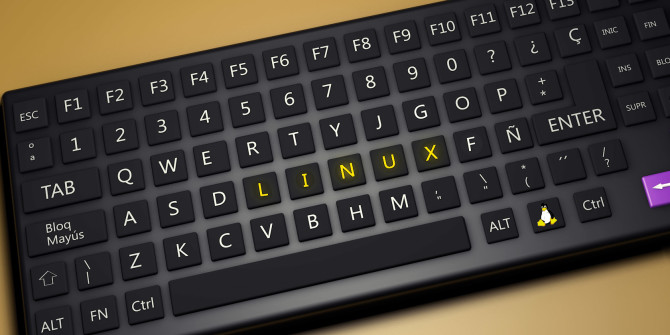Using The Terminal
The examples in this document assume that you are using a POSIX-compliant (such as bash, sh, zsh, ksh) shell.
Large portions of GNU/Linux functionality are achieved using the terminal. Most distributions of Linux include terminal emulators that allow users to interact with a shell from their desktop environment. A shell is a command line interpreter that executes user inputted commands. Bash (Bourne Again SHell) is a common default shell among many Linux distributions and is the default shell for macOS.
These shortcuts will work if you are using Bash with the emacs keybindings (set by default):
Open terminal
- Ctrl + Alt + T or Super + T
Cursor movement
- Ctrl + A |-> Go to the beginning of the line you are currently typing on.
- Ctrl + E | -> Go to the end of the line you are currently typing on.
- Ctrl + XX |-> Move between the beginning of the line and the current position of the cursor.
- Alt + F |-> Move cursor forward one word on the current line.
- Alt + B |-> Move cursor backward one word on the current line.
- Ctrl + F |-> Move cursor forward one character on the current line.
- Ctrl + B |-> Move cursor backward one character on the current line.
Text manipulation
- Ctrl + U |-> Cut the line from the current position to the beginning of the line, adding it to the clipboard. If you are at the end of the line, cut the entire line.
- Ctrl + K |-> Cut the line from the current position to the end of the line, adding it to the clipboard. If you are at the beginning of the line, cut the entire line.
- Ctrl + W |-> Delete the word before the cursor, adding it to the clipboard.
- Ctrl + Y |-> Paste the last thing from the clipboard that you cut recently (undo the last delete at the current cursor position).
- Alt + T |-> Swap the last two words before the cursor.
- Alt + L |-> Make lowercase from the cursor to the end of the word.
- Alt + U |-> Make uppercase from the cursor to the end of the word.
- Alt + C |-> Capitalize to end of word starting at cursor (whole word if the cursor is at the beginning of the word).
- Alt + D Delete to end of word starting at cursor (whole word if the cursor is at the beginning of the word).
- Alt + . |-> Prints the last word written in the previous command.
- Ctrl + T |-> Swap the last two characters before the cursor.
History access
- Ctrl + R |-> Lets you search through previously used commands.
- Ctrl + G |->Leave history searching mode without running a command.
- Ctrl + J |-> Lets you copy current matched command to command line without running it, allowing you to GoalKicker.com – Linux® Notes for Professionals 3 make modifications before running the command.
- Alt + R |-> Revert any changes to a command you’ve pulled from your history if you’ve edited it.
- Ctrl + P |-> Shows last executed command, i.e. walk back through the command history (Similar to up arrow).
- Ctrl + N |-> Shows next executed command, i.e. walk forward through the command history (Similar to down arrow).
Terminal control
- Ctrl + L |-> Clears the screen, similar to the clear command.
- Ctrl + S |-> Stop all output to the screen. This is useful when running commands with lots of long output. But this doesn’t stop the running command.
- Ctrl + Q |-> Resume output to the screen after stopping it with Ctrl+S.
- Ctrl + C |-> End currently running process and return the prompt.
- Ctrl + D |-> Log out of the current shell session, similar to the exit or logout command. In some commands, acts as End of File signal to indicate that a file end has been reached.
- Ctrl + Z |-> Suspends (pause) currently running foreground process, which returns shell prompt. You can then use bg command allowing that process to run in the background. To again bring that process to foreground, use fg command. To view all background processes, use jobs command.
- Tab Auto |-> complete files and directory names.
- Tab Tab |-> Shows all possibilities, when typed characters doesn’t uniquely match to a file or directory name.
Special characters
- Ctrl + H |-> Same as Backspace.
- Ctrl + J |-> Same as Return (historically Line Feed).
- Ctrl + M |-> Same as Return (historically Carriage Return).
- Ctrl + I |-> Same as Tab.
- Ctrl + G |-> Bell Character.
- Ctrl + @ |-> Null Character.
- Esc |-> Deadkey equivalent to the Alt modifier.
Close Terminal
- Ctrl + Shift + W |-> To close terminal tab.
- Ctrl + Shift + Q |-> To close entire terminal
Alternatively, you can switch to the vi keybindings in bash using set -o vi. Use set -o emacs to switch back to the emacs keybindings.
